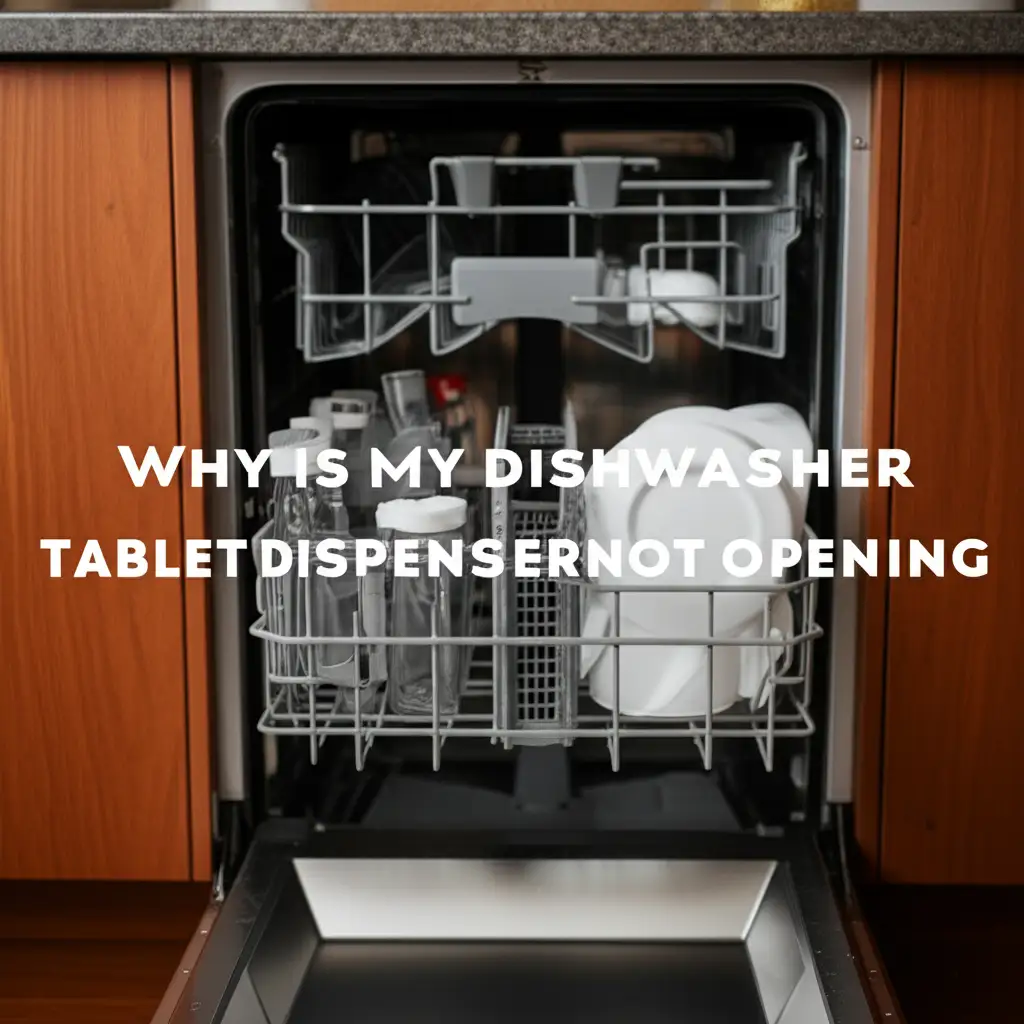· Todd Martin · Appliance Repair · 17 min read
How To Replace Frigidaire Dishwasher Lower Spray Arm

Fix Your Frigidaire Dishwasher: Replace the Lower Spray Arm
Have you noticed your dishes are not as clean as they used to be? Perhaps you see food particles left behind, or dishes feel gritty after a full wash cycle. These frustrating signs often point to one common culprit: a faulty lower spray arm in your Frigidaire dishwasher. This part is essential for spraying water effectively to clean items on the bottom rack.
Replacing the Frigidaire dishwasher lower spray arm might seem daunting at first. However, it is a straightforward repair most homeowners can do themselves. This guide breaks down the entire process. I will show you why the spray arm fails, what tools you need, and how to safely install a new one. You can restore your dishwasher’s cleaning power and enjoy sparkling dishes again.
Takeaway
- Identify Symptoms: Watch for poor cleaning, unusual noise, or visible damage to the spray arm.
- Gather Essentials: Collect basic tools and the correct replacement part for your Frigidaire model.
- Prioritize Safety: Always disconnect power and water before starting any repair work.
- Follow Steps: Carefully remove the old spray arm and install the new one, ensuring a secure fit.
- Test Thoroughly: Run a test cycle to confirm proper operation and effective cleaning.
To replace a Frigidaire dishwasher lower spray arm, first disconnect power and water. Clear the dishwasher tub. Remove the old spray arm by pulling it up or unscrewing its retaining nut. Install the new spray arm by aligning it with the wash manifold and pushing or screwing it into place. Reconnect utilities and test.
Why Your Frigidaire Dishwasher Needs a New Lower Spray Arm
Your Frigidaire dishwasher relies on its lower spray arm to get dishes clean. This part rotates and sprays high-pressure water onto items in the bottom rack. When the spray arm stops working correctly, your dishes stay dirty. You might wonder why this vital component fails. Understanding the causes helps you spot issues early.
One common reason for failure is physical damage. The plastic arm can crack or break from impact with dishes or heavy pots. Sometimes, sharp objects like broken glass or silverware can fall into the wash tub and hit the spinning arm. This impact causes chips or large cracks. A damaged spray arm cannot spray water evenly. This leads to poor cleaning results.
Another issue is clogging. Small food particles, mineral deposits from hard water, or even pieces of plastic can block the tiny holes on the spray arm. Over time, these blockages reduce water flow and pressure. The arm might not spin freely, or some areas of your dishes will not get enough water. This leaves spots or food residue. This blockage often explains why your Frigidaire dishwasher is not filling with water correctly.
General wear and tear also play a role. The spray arm spins thousands of times over its lifespan. The plastic can become brittle with age and repeated exposure to hot water and harsh detergents. The rotating mechanism at the base might also wear out, causing the arm to wobble or stop spinning entirely. If your dishes are consistently dirty, especially on the bottom rack, a new lower spray arm is likely the solution. You can compare this to how a problem with an upper spray arm affects cleaning on the top rack.
Gathering Your Tools and New Parts
Before you begin any repair, gather all necessary tools and the correct replacement part. Having everything ready saves time and frustration. It also makes the repair process smoother and more efficient. I always recommend getting organized before I start any DIY project.
First, you need basic hand tools. A Phillips head screwdriver is often useful. You might also need a flathead screwdriver. Pliers can help with stubborn connections, though they are not always required for spray arm replacement. Have a few clean towels or a sponge ready. These will help soak up any spilled water.
Next, finding the correct replacement Frigidaire dishwasher lower spray arm is crucial. Dishwashers vary by model. A spray arm from one model may not fit another. Locate your dishwasher’s model number. This number is usually on a sticker around the inner edge of the dishwasher door. You might find it on the side or top edge. Once you have the model number, search online for “Frigidaire dishwasher [your model number] lower spray arm.” Many appliance parts websites sell genuine Frigidaire parts. You can also visit a local appliance parts store. Ensure the new part matches your existing spray arm exactly.
It is wise to compare the new part with the old one once you remove it. They should look identical in size and connection type. I usually double-check the part number before ordering to avoid returns. Having the right part ensures a perfect fit. This step saves you from doing the job twice.
Essential Safety Measures Before You Start
Safety is the most important part of any home appliance repair. Working with electrical appliances and water lines presents risks. Taking proper precautions prevents injury and protects your home. I always put safety first, no matter how small the repair seems.
Your first step must be disconnecting power to the dishwasher. Do not just turn off the dishwasher at the control panel. You need to cut off its electricity supply completely. Go to your home’s main electrical panel. Find the circuit breaker labeled for your kitchen or dishwasher. Flip this breaker to the “off” position. If your dishwasher is plugged into a wall outlet, simply unplug the power cord from the outlet. This step ensures no accidental electrical shock occurs while you work inside the appliance.
Next, you must turn off the water supply to the dishwasher. Locate the water shut-off valve for the dishwasher. This valve is usually under the kitchen sink, behind the dishwasher, or in the basement near the kitchen area. Turn the handle clockwise until the water flow stops completely. You may need to run the dishwasher for a moment after turning off the water to drain any remaining water from the line. This prevents water from spilling out when you remove the spray arm. This step is similar to what you would do if you needed to replace a Frigidaire dishwasher water inlet valve.
Finally, clear the work area around the dishwasher. Remove any dishes or items from inside the dishwasher tub. Have your tools within easy reach. Place your towels nearby for any drips. Creating a clean and safe workspace helps you focus on the task. These essential safety measures make your repair project much safer and easier to complete. They give you peace of mind throughout the process.
Removing the Old Frigidaire Lower Spray Arm
Now that safety precautions are in place, you can start removing the old lower spray arm. This process is usually simple. Most Frigidaire models have an easily removable lower spray arm. You just need to know how to properly access it. I find it helpful to take a moment and look at the setup before touching anything.
First, open the dishwasher door completely. Pull out the lower dish rack. You need clear access to the bottom of the dishwasher tub. Remove any dishes or obstructions. Check if there is standing water in the bottom. If so, use a sponge or towels to soak it up. A dry tub makes working easier and cleaner. This helps you get a clear view of the spray arm’s base.
The Frigidaire lower spray arm usually sits on a central wash manifold. This is the part that delivers water to the spray arm. In many Frigidaire models, the lower spray arm simply lifts straight up to remove it. Grab the spray arm firmly. Pull it upwards. It should detach from the wash manifold. You may hear a small click as it disengages. Some models might have a retaining nut or cap at the base of the spray arm. This nut holds the arm in place. If your model has one, twist it counter-clockwise to loosen and remove it. Once the nut is off, you can lift the spray arm. This removal process is often similar to removing a GE dishwasher spray arm base.
Inspect the removed spray arm. Look for cracks, breaks, or clogged holes. This confirms why you needed to replace it. Also, check the wash manifold for any debris or damage. Clean around the opening if needed. You want a clear path for the new spray arm to attach. Set the old spray arm aside for disposal. You are now ready to install the new part.
Clearing the Dishwasher Interior
Before touching the spray arm, ensure the dishwasher tub is completely empty. Remove all dish racks, silverware baskets, and any loose items. You need a clear, unobstructed view of the bottom basin. This space allows you to work comfortably. Any dishes left inside could get in the way or even break.
Check for any standing water in the bottom of the tub. Even after turning off the water supply, some residual water might remain. Use a large sponge or absorbent towels to remove this water. A dry work area prevents slips and makes the job cleaner. This step also helps you see the spray arm’s connection point clearly.
Detaching the Spray Arm
With the tub clear, locate the base of the lower spray arm. Most Frigidaire lower spray arms use a simple push-and-pull design for removal. Grip the spray arm with both hands. Pull straight up firmly. It should detach from the central water feed tube. You might feel a slight resistance or hear a click.
Some older Frigidaire models might have a locking nut or cap at the very base of the spray arm. This cap secures the arm to the water supply tube. If you see such a cap, turn it counter-clockwise to loosen it. Once loose, you can lift the spray arm free. Always be gentle to avoid damaging the water supply tube beneath. Compare your removal method to how you might put a Frigidaire dishwasher filter back in, as both involve simple internal component handling.
Installing the New Frigidaire Lower Spray Arm
With the old spray arm removed, installing the new one is usually even simpler. The process generally reverses the removal steps. I find that new parts often fit more snugly, which is a good sign. It confirms you have the right part.
Take your new Frigidaire dishwasher lower spray arm out of its packaging. Hold it up to the central wash manifold in the bottom of the dishwasher tub. You will see a shaft or tube sticking up from the manifold. The new spray arm needs to slide onto this shaft. Ensure the arm’s opening aligns properly with the shaft. It should fit without forcing it.
If your original spray arm simply pulled off, the new one will likely just push on. Align the hole in the center of the new spray arm with the wash manifold shaft. Gently push down until it clicks into place. Give it a gentle pull upwards to make sure it is secure. It should not come off easily. Once attached, spin the arm a few times with your hand. It should rotate freely without hitting any part of the dishwasher tub or the filter assembly. Free rotation is key for even water distribution during cycles.
If your model had a retaining nut or cap, place the new spray arm onto the shaft. Then, thread the nut or cap onto the shaft below the spray arm. Turn it clockwise until it is snug. Do not overtighten it. Overtightening can crack the plastic. Just make it firm enough so the spray arm does not wobble or lift off. Once secured, try spinning the arm again. It should still rotate freely. A proper installation ensures your dishwasher will clean dishes effectively again.
Aligning the New Spray Arm
Carefully position the new Frigidaire lower spray arm directly over the central water supply tube in the bottom of the dishwasher tub. The new spray arm has a central opening that must fit precisely onto this tube. Look for any grooves or tabs that need to line up. Proper alignment is crucial for the spray arm to sit correctly and receive water.
Ensure the arm is level and not tilted. A misaligned arm may not spin freely. It also might not spray water effectively across the entire bottom rack. Take your time to get this alignment right. It prevents future issues and ensures optimal cleaning performance.
Securing the Connection
Once aligned, gently push the new spray arm down onto the water supply tube. For most Frigidaire models, you will feel a definite “click” as it locks into place. This click indicates a secure connection. After hearing the click, give the spray arm a slight tug upwards to confirm it is firmly seated. It should not lift off easily.
If your specific Frigidaire model uses a locking nut or cap, once the spray arm is on the tube, carefully twist the nut clockwise until it is hand-tight. Do not use tools to overtighten, as this can strip the plastic threads. The goal is to secure the arm without restricting its ability to spin. Spin the newly installed spray arm by hand to confirm it rotates smoothly and freely. It should not rub against the dishwasher tub or any internal components.
Testing Your Dishwasher After Replacement
After successfully installing the new Frigidaire dishwasher lower spray arm, it is time for the final and exciting step: testing. This step confirms your hard work paid off. It ensures everything works correctly before you load your next batch of dirty dishes. I always feel a sense of accomplishment at this point.
First, reconnect the power supply. Go back to your electrical panel and flip the circuit breaker for the dishwasher back to the “on” position. If you unplugged the dishwasher, plug its power cord back into the wall outlet. Next, open the water shut-off valve that you closed earlier. Turn the handle counter-clockwise until it is fully open. You should hear the water line refilling.
Now, it is time to run a test cycle. I recommend running an empty cycle first. This lets you observe the spray arm’s function without obstruction from dishes. Choose a short wash cycle, if your dishwasher has one. Close the dishwasher door and start the cycle. Listen for the sound of water spraying. You might even hear the new lower spray arm spinning. If your dishwasher has a transparent door, you can actually watch the arm spin.
During the cycle, check for any leaks. Look around the base of the dishwasher, especially near the front. A leaking dishwasher is a sign something is not sealed properly. If you see water, stop the cycle immediately and investigate. Refer to guides on why your Frigidaire dishwasher might be leaking from the bottom of the door if you find a leak. After the cycle finishes, open the door and inspect the inside. The tub should be free of any standing water. The interior should look clean. If all looks good, congratulations! You successfully replaced your Frigidaire dishwasher lower spray arm.
Maintaining Your Dishwasher’s Spray Arm for Longevity
Replacing your Frigidaire dishwasher lower spray arm fixes the immediate problem. However, proper maintenance extends the life of your new spray arm. It also keeps your dishes consistently clean. Regular care prevents common issues like clogs and damage. I follow these simple steps to keep my appliances running well.
One key maintenance tip is to pre-rinse dishes. While modern dishwashers claim to handle tough food, large food particles are the main cause of spray arm clogs. Scrape off excess food before loading dishes. This prevents chunks of food from entering the spray arm holes. Fine debris can also get caught in the spray arm. This includes things like rice or seeds. You can learn more about general spray arm cleaning tips, like those for an LG dishwasher upper spray arm.
Regularly inspect and clean the spray arm. Even with pre-rinsing, some debris can build up over time. Every few months, remove the lower spray arm. Inspect the tiny holes for blockages. Use a toothpick or a small brush to clear any obstructions. You can also rinse the arm under a faucet to flush out debris. This ensures water flows freely and powerfully. This is similar to how you would clean a spray nozzle on a garden hose.
Also, be mindful of how you load your dishwasher. Avoid placing tall items directly under the lower spray arm. These items can block its rotation. Make sure dishes and pots do not touch the spray arm, especially the rotating parts. Any physical obstruction can cause the arm to grind or break over time. Heavy items should be placed on the bottom rack. Lighter items should be secured so they do not fly around during the wash cycle. Following these maintenance tips helps your new Frigidaire dishwasher lower spray arm perform effectively for many years.
FAQ Section
How do I know if my Frigidaire dishwasher lower spray arm is bad?
You can tell your Frigidaire dishwasher lower spray arm is bad if your dishes are not clean, especially on the bottom rack. You might see food residue or water spots. Visible cracks, chips, or bent sections on the spray arm are clear signs. If the arm does not spin freely by hand or makes unusual noises during a cycle, it likely needs replacement.
Can I use a universal spray arm for my Frigidaire?
No, you should not use a universal spray arm for your Frigidaire dishwasher. Dishwasher spray arms are specific to makes and models. A universal arm may not fit properly or connect to your Frigidaire’s wash manifold. Using the wrong part can lead to leaks, poor cleaning, or further damage to your appliance. Always use a genuine Frigidaire replacement part or one specifically listed as compatible with your model number.
How long does it take to replace the lower spray arm?
Replacing a Frigidaire dishwasher lower spray arm is a quick repair. The actual process typically takes only 10 to 30 minutes. This includes disconnecting power and water, removing the old arm, installing the new one, and reconnecting utilities. Gathering tools and finding the part may add a little more time, but the repair itself is very fast.
What causes a Frigidaire dishwasher spray arm to stop spinning?
A Frigidaire dishwasher spray arm can stop spinning due to several reasons. Food debris or mineral deposits can clog the spray arm’s small holes, reducing water pressure needed for rotation. The central hub or bearing might be worn out. Also, objects like utensils or large dishes can block the arm’s path, preventing it from spinning freely during a wash cycle.
Do I need special tools for this repair?
No special tools are generally required to replace a Frigidaire dishwasher lower spray arm. Most repairs only need basic household tools. A Phillips head screwdriver is sometimes useful for removing small retaining screws. A flathead screwdriver can assist with prying if needed. For most Frigidaire models, the spray arm simply lifts off without tools.
Where can I find the model number on my Frigidaire dishwasher?
You can find the model number for your Frigidaire dishwasher inside the appliance door. Open the dishwasher door fully. Look for a sticker or plate located around the inner edge of the door, on the side, or on the top rim. This label typically contains the model number, serial number, and other product information.
Conclusion
Replacing your Frigidaire dishwasher lower spray arm is a straightforward DIY task. I hope this guide gives you the confidence to tackle it. We covered identifying the problem, gathering the right tools, and taking essential safety steps. Then, we walked through removing the old spray arm and installing the new one. Finally, we discussed testing and ongoing maintenance for your dishwasher.
Taking charge of appliance repairs like this saves you money. It also gives you a great sense of accomplishment. A properly functioning Frigidaire dishwasher lower spray arm means clean dishes every time. You do not need to call a technician for this common issue. You now have the knowledge to perform this important repair yourself. Go ahead, replace that Frigidaire dishwasher lower spray arm and enjoy sparkling clean dishes once more. You are capable of handling more home maintenance tasks than you think!
- Frigidaire dishwasher
- lower spray arm
- dishwasher repair
- DIY appliance fix
- poor wash performance
- home maintenance





